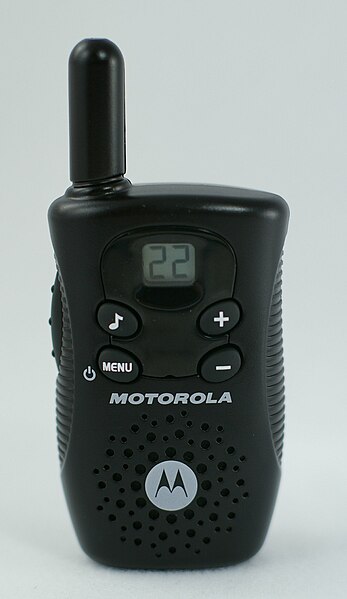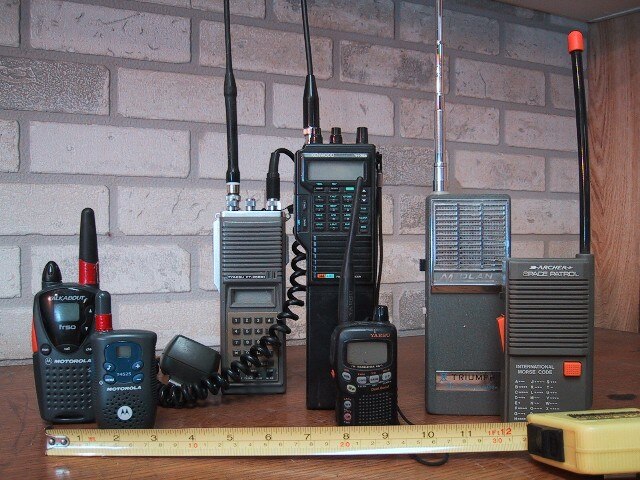The Family Radio Service (FRS) is an improved walkie-talkie radio system authorized in the United States since 1996. This personal radio service uses channelized frequencies around 462 and 467 MHz in the ultra high frequency (UHF) band. It does not suffer the interference effects found on citizens' band (CB) at 27 MHz, or the 49 MHz band also used by cordless telephones, toys, and baby monitors. FRS uses frequency modulation (FM) instead of amplitude modulation (AM). Since the UHF band has different radio propagation characteristics, short-range use of FRS may be more predictable than the more powerful license-free radios operating in the HF CB band.
Motorola T5320 FRS handheld radio
Motorola FV150 FRS and GMRS handheld radio
A walkie-talkie, more formally known as a handheld transceiver (HT), is a hand-held, portable, two-way radio transceiver. Its development during the Second World War has been variously credited to Donald Hings, radio engineer Alfred J. Gross, Henryk Magnuski and engineering teams at Motorola. First used for infantry, similar designs were created for field artillery and tank units, and after the war, walkie-talkies spread to public safety and eventually commercial and jobsite work.
Recreational, toy and amateur radio walkie-talkies
Assorted two-way FRS and GMRS walkie talkies with hand mic
Noemfoor, Dutch New Guinea, July 1944. A US soldier (foreground) uses a Handie-Talkie during the Battle of Noemfoor.
A modern Project 25 capable professional walkie-talkie






